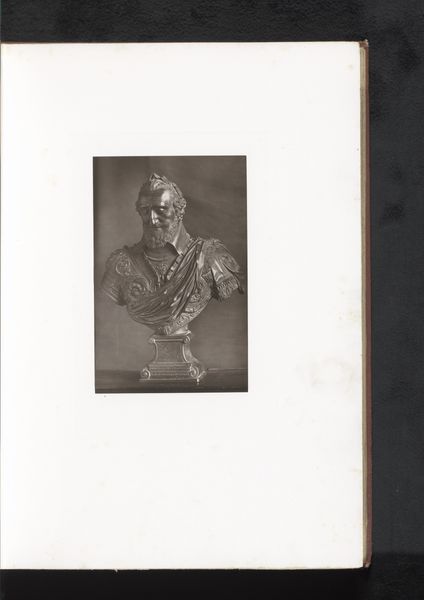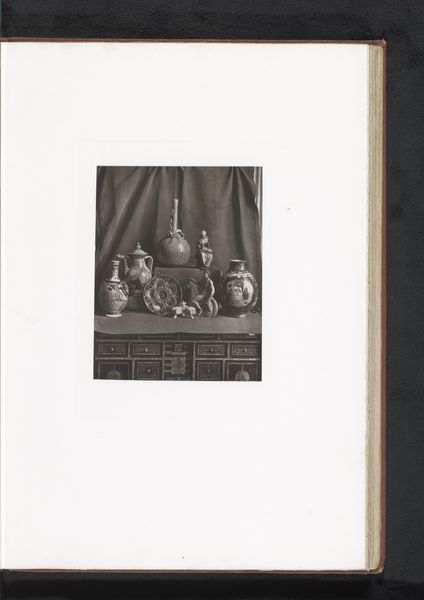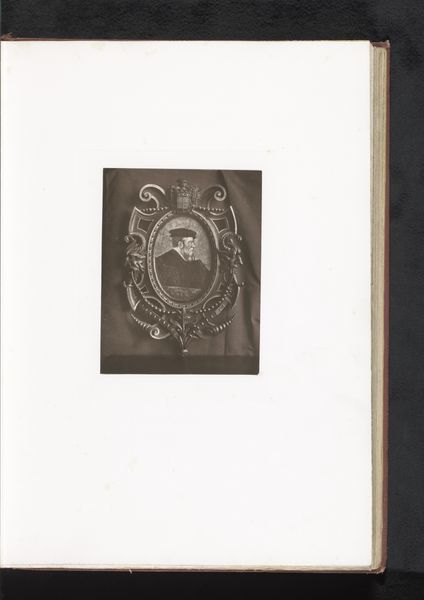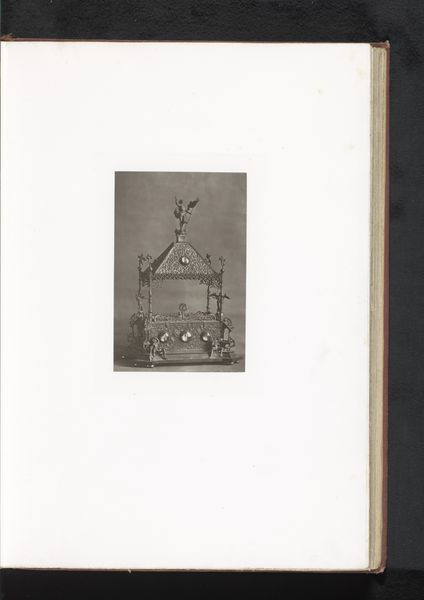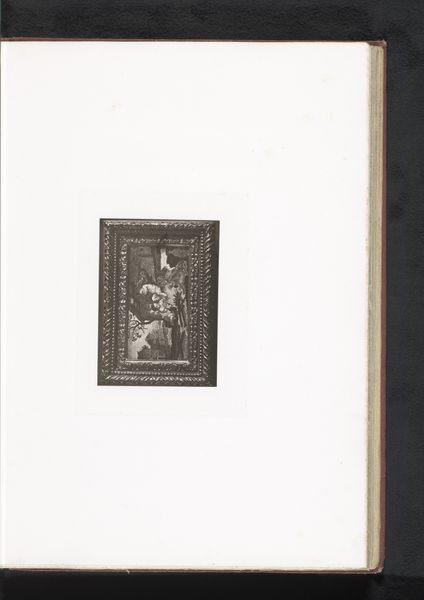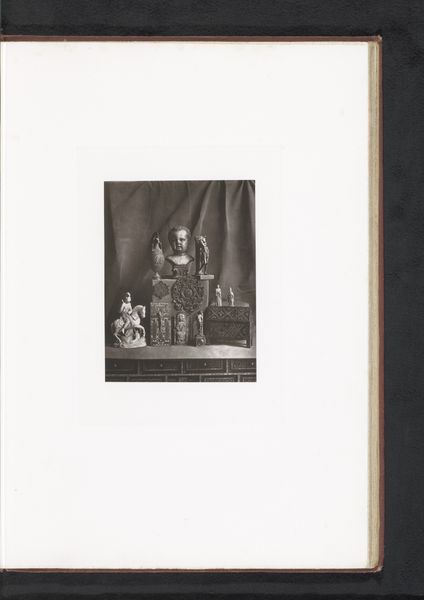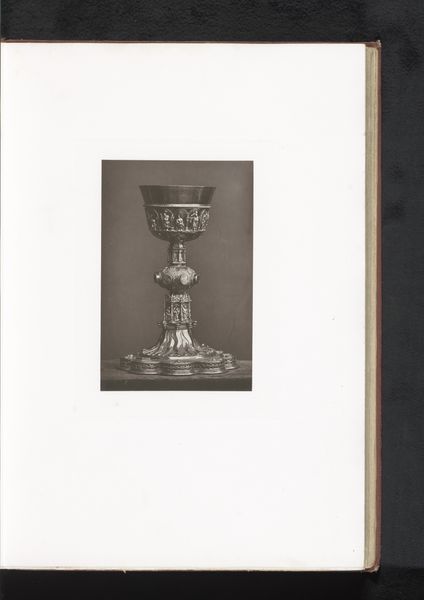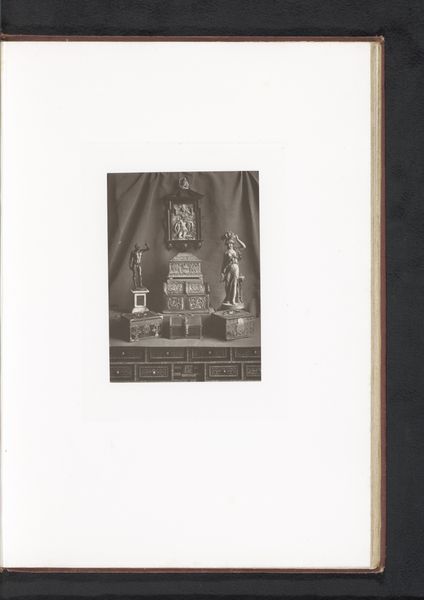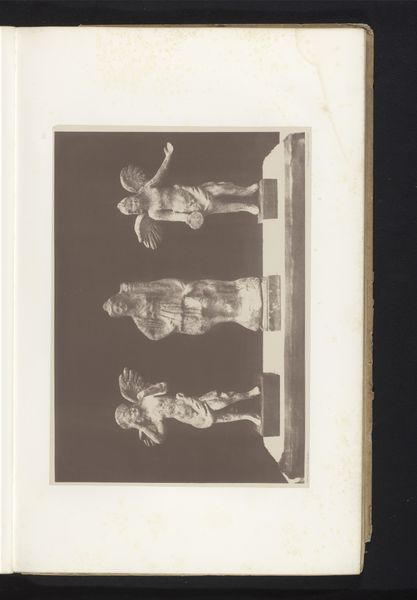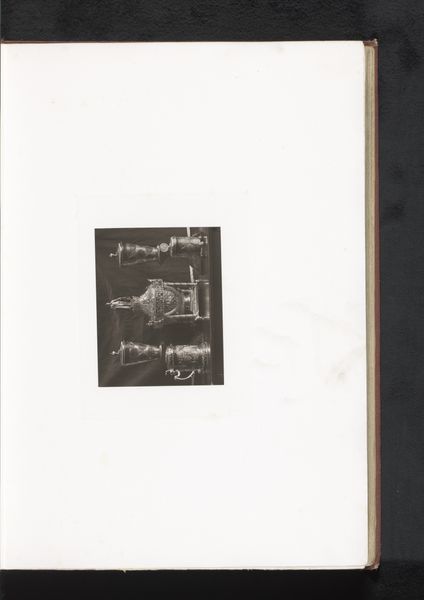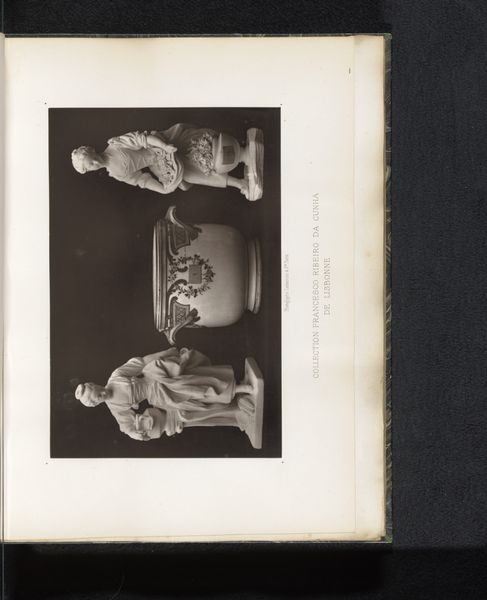
Buste van Michelangelo, opgesteld tijdens de Exposition Rétrospective van 1873 in Tours, Frankrijk 1873
0:00
0:00
bronze, photography, sculpture
#
portrait
#
bronze
#
photography
#
sculpture
#
academic-art
Dimensions: height 157 mm, width 100 mm
Copyright: Rijks Museum: Open Domain
Editor: Here we have a photograph from 1873 titled "Buste van Michelangelo, opgesteld tijdens de Exposition Rétrospective van 1873 in Tours, Frankrijk." It seems to be a bronze bust of Michelangelo. There is a formality and almost gravity to the presentation. What stands out to you in this piece? Curator: It's fascinating how this photograph captures not just a bust of Michelangelo, but also a moment in the history of art reception itself. These expositions were powerful tools for shaping public opinion on artists and artistic movements. This image documents an early attempt to solidify Michelangelo's place in the canon. Notice the solemn staging - how does this specific setting reinforce certain interpretations and downplay others? Editor: It does feel like a very deliberate attempt at immortalizing him. Almost a way of controlling the narrative around his legacy. Was photography often used this way, to document and almost legitimize exhibitions? Curator: Absolutely. Photography played a key role in democratizing art to some degree, making it more accessible to broader audiences, yet it also helped institutionalize particular narratives about art and its history. Consider how the photographer chooses to frame this object. Is it presented as a purely artistic creation, or also as a historical artifact? Editor: It’s both, I think, presented reverently. The choice of bronze, even photographed, lends a timelessness. Did these exhibitions typically focus on solidifying "masters" of the past, or did they champion new and emerging artists as well? Curator: Often both, though retrospective exhibitions like this were certainly instrumental in constructing the very notion of a "master" in the first place. Thinking about it this way, perhaps the "Buste van Michelangelo" isn't merely a portrait of a man but rather, the embodiment of artistic genius as conceived by a specific historical period. Editor: That’s a really interesting perspective. I hadn't considered how much these events, and the images they produced, actively shaped our understanding of art history. It definitely reframes the photograph for me. Curator: Exactly, we shape art, but also art shapes us. Thank you.
Comments
No comments
Be the first to comment and join the conversation on the ultimate creative platform.

